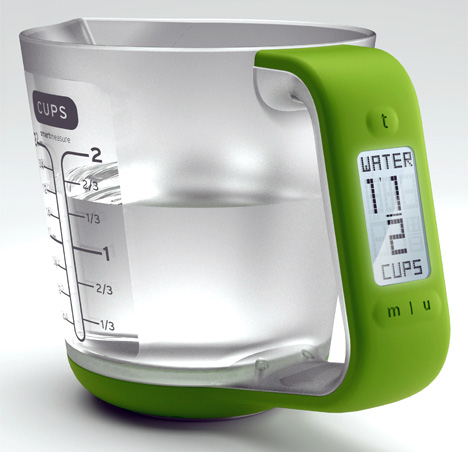As usual there were a lot of things that happened during the week, and not all of it was pharmacy or technology related. Here’s a quick look at some of the stuff I found interesting.
– Funny People was #1 at the box office last weekend. I haven’t had the chance to watch it yet, so I have no opinion on the matter.
– There’s a great article at Health Data Management titled “Straddling Two Worlds”. The article gives some great pointers on areas where pen and paper are perceived superior to electronic documentation. The author, Gary Baldwin, lists five lessons learned from organizations that continue to use a hybrid model of paper and electronic documentation. The lessons learned include: Â “Some Records Are Destined to Remain in Paper”, “Not All Electronic Workflows Are Valuable”, “Not All Document Imaging Interfaces to EHRs Are Created Equally”, “Imaging Systems Can Streamline Operations”, “Don’t Be Penny-Wise, Pound-Foolish”. My favorite quote from the entire article, “We can do a lot with tablets and put data right in front of the physicians,” Cooper says. “But nothing replaces pen and paper with physicians. I don’t know how you get past that.” That pretty much sums up the whole thing. The article is well written and gives a fresh perspective to the argument of paper versus tech.
– The Microsoft Health Users Group (HUG)Â meeting will be held on September 2nd and 3rd on the Microsoft Campus in Redmond, Washington. After all the abuse Microsoft has taken over the years, I still think they have something to bring to the table. After all, they’ve managed to create some of the most widely used technology in the history of mankind. I’d really like to go. Anyone up for a road trip?
– Portable healthcare records appear to be a popular topic lately. The Healthcare IT Blog reported on a new private health record system from Heartwood Health that should allow users to easily create and maintain a readily available personal health record.  In addition, mobilehealthnews presented a video on an application called Chief Medical Officer that gives patients access to their Google Health files via their iPhone or iPod Touch. It was bound to happen as talk of EMRs is at an all time high and technology like the iPhone, BlackBerry, and even the new Microsoft HD are making access to information easier than ever. The healthcare cloud is looking more like a reality every day. Exciting, don’t you think.
– Props to an intelligent and hardworking pharmacist in Philadelphia that created his own pediatric knowledgebase.
-Â A recent survey of 253 radiologists in Canada’s 13 English-speaking and 13 US university-affiliated radiology departments on the management of severe contrast induced allergic reactions determined that:
1. No radiologist gave the ideal response on what dose of epinephrine was needed to counter the reaction.
2. Only 41% of the radiologist surveyed provided an acceptable route of administration, concentration, and dose.
3. 17% of radiologists provided an overdose
4. Only 11% had sufficient knowledge regarding the contents of their crash carts/drug kits.
5. Only 60% of radiologists were aware that 1:1000 concentrated epinephrine is supplied in 1-mL glass ampules, and 31% knew that the 1:10,000 concentration is supplied in 10-mL preloaded syringes.
Contrast induced allergic reactions are very dangerous, and can on rare occasions be deadly. That makes these findings even that much more disturbing.
– Medication adherence is a huge problem in the healthcare industry. Individuals that don’t stick to their medication regimens typically have a higher rate of hospitalization. This is especially true in patients with advanced medical conditions like diabetes, heart failure, HIV/AIDS, etc. A recent investigation (Am J Health Syst Pharm. 2009;66:657-664) took a look at the factors indicative of low medication adherence. They were: age < 65 years, low self-efficacy scores, and negative beliefs about medication. There’s your target population. To my surprise health literacy was not a significant predictor of medication adherence. That’s actually good news.
– In the consumer-tech-is-kicking-our-butts category, you can now buy a measuring cup that has an LCD readout that tells you the exact volume you’re measuring. This development needs to spill over to healthcare, as a device like this could be especially useful in pediatrics.
– Check out “The Complete Guide to Going Paperless” at Lifehacker and the follow-up post at GottaBeMobile. Both posts offer some great information on decreasing the paper clutter in your office and home. Myself, well I’m working on it. Try as I might, I continue to rely on paper for sketching out ideas. Old habits die hard.
– Here’s a bad idea for healthcare; the drive-thru emergency room. Pharmacies started this trend in healthcare many years ago, and I’ve never been a big fan of the idea. All you doctors out there take a piece of advice and don’t let it happen to your profession as well.
– Looks like scientists at Brookhaven National Labs may have found a way to imprison bacteria by using a fibrous hydrogel. The hydrogel features hollow fibers capable of encapsulating individual bacterial cells. “These new, stable, bio-hybrid materials maintain the microbes’ ability to exchange nutrients and metabolic products with their environment, and could find widespread applications, for example, as biosensors, catalysts, drug-delivery systems, or in wastewater treatment.” The method and results are described in a paper published online by the Proceedings of the National Academy of Sciences the week of August 3, 2009.
– Next week I will be in Philadelphia at Siemens Innovations ’09. I should be chock-full of ideas when I get back. Until then, have a great weekend everyone.

Leave a Reply